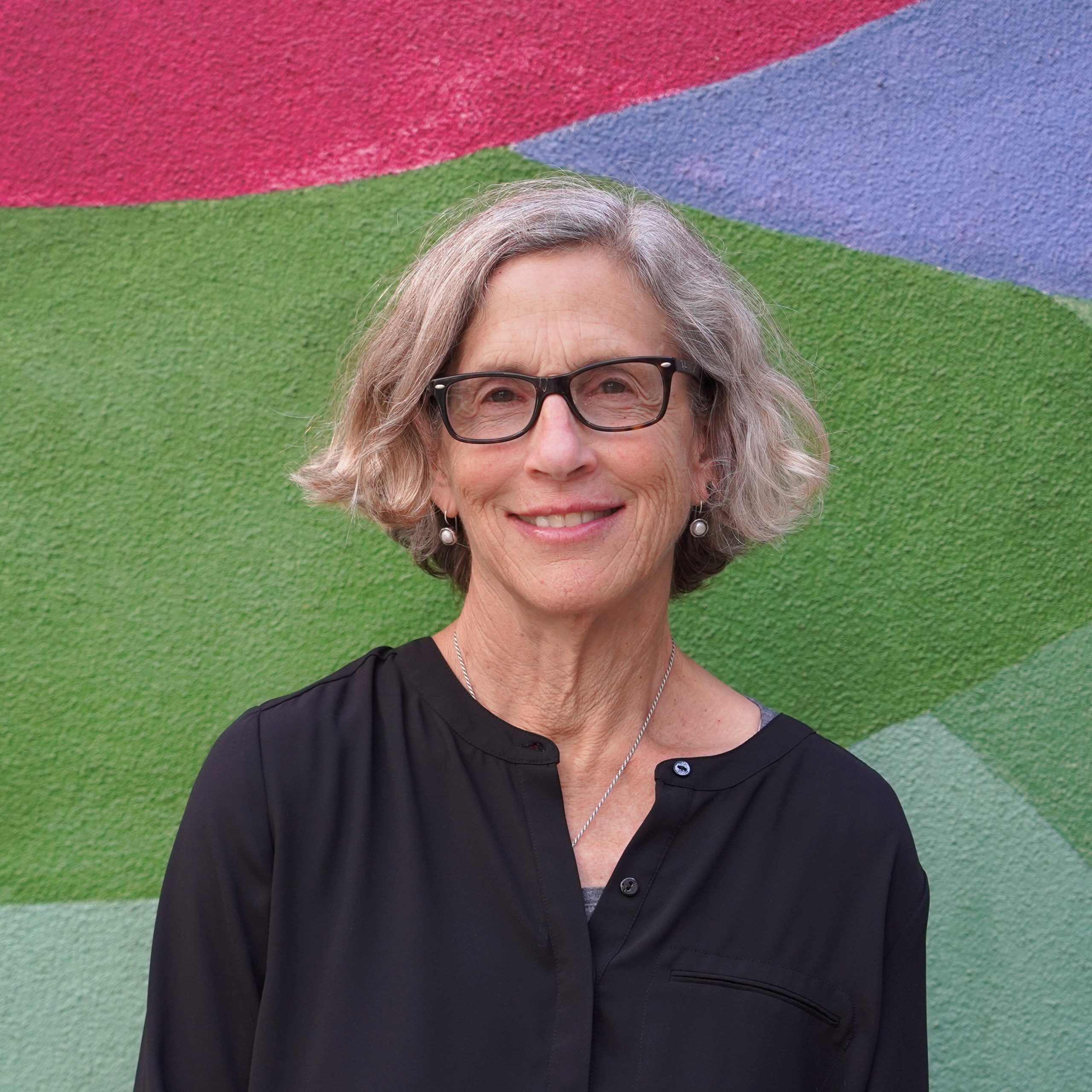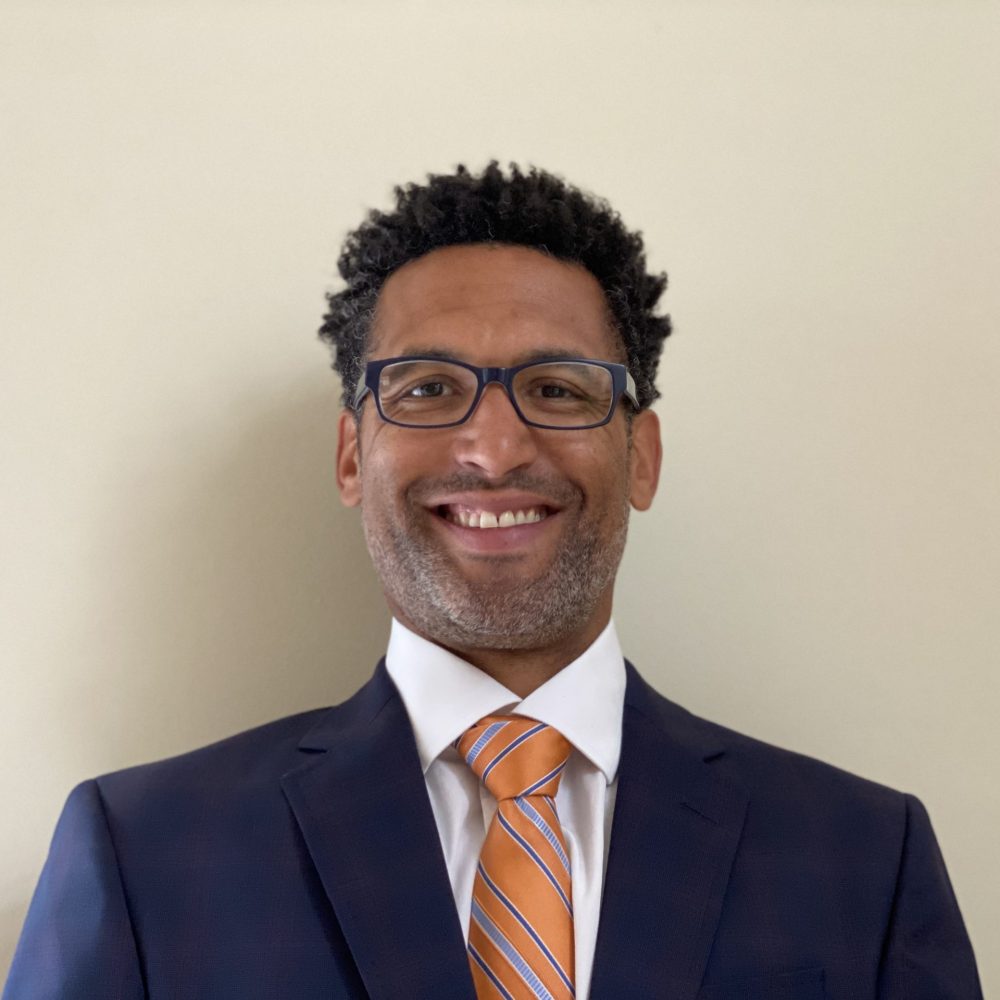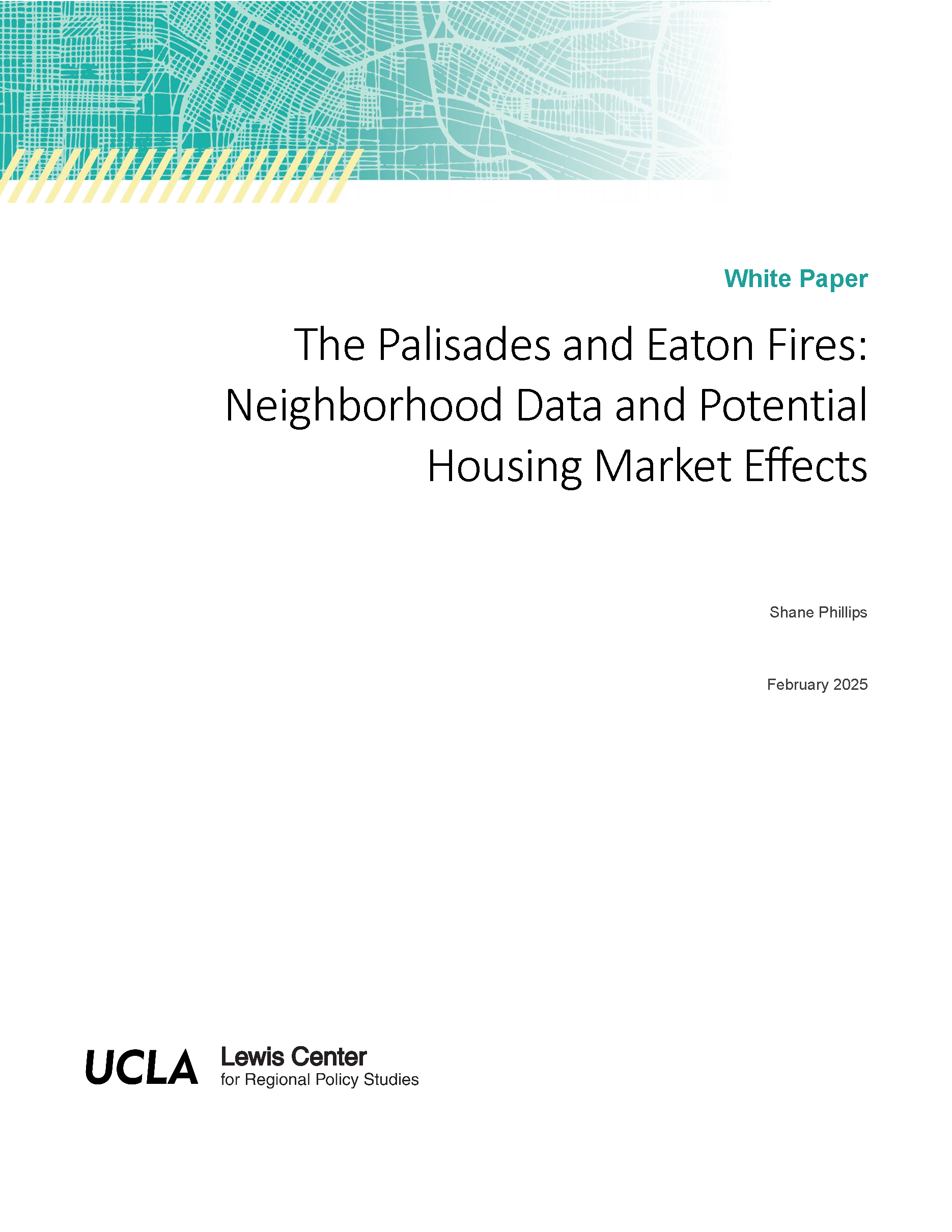
2025 | Access to Opportunities, Community Planning, Housing Initiative
Los Angeles Wildfire Response
Project Description
Few wildfires had previously impacted large urban areas as the 2025 Los Angeles fires. The scale, destruction, and effects on human lives in the Palisades and Eaton fires, in particular, highlighted the need to understand better how people and planning respond to and can prepare for future disasters. In response, the Lewis Center scholars, often in partnership with scholars outside of UCLA, are embarking on a suite of projects to understand the local context in these communities and the transportation and housing responses for affected people, as well as provide suggestions and guidance for rebuilding efforts and future community preparedness.
Household Responses to the Los Angeles Wildfire Emergency
Project Description
This project focuses on how people responded during and after the rapidly moving wildfire events in Los Angeles — how they evacuated, where they found short-term temporary shelter, and how the experience affects households in the short and long term. The research team will administer household-based surveys to people who previously lived in the most affected areas of Pacific Palisades and Altadena and generate critical knowledge about how people traveled and where they took shelter in one of the most destructive wildfires that affected an urban area in recent history. More broadly, this project will provide data necessary to understand better how households will react to fires, other natural disasters, and acts of terrorism. The overall increase in wildfire disasters has highlighted the need to better understand human behavioral responses to these events to prepare households, emergency responders, and management agencies in the future. Given the limited body of research on wildfires that encroach on major urban areas, this work will add insights into how households responded to these emergency conditions in urban areas that are likely to be increasingly affected.
Status
Ongoing
Funding Source
National Science Foundation and UCLA Office of the Vice Chancellor for Research & Creative Activities
PI Contact

Evelyn Blumenberg
DIRECTOR
Lewis Center for Regional Policy Studies
Wildfire Evacuation Response and Plans Among Transit Riders in Los Angeles County
Project Description
Fast-moving wildfires pose significant challenges for transportation-insecure households that are more likely to rely on public transit to meet their daily needs. These households, often low-income and historically under-researched, face compounded risks after evacuation: extended exposure to toxic air while evacuating and limited ability to adapt to bus service disruptions that may jeopardize access to health care and other essential destinations. Most existing studies of wildfire evacuations focus on vehicle-owning households and assume that evacuees will use their vehicles while evacuating. No previous studies have collected near real-time data on transit riders’ evacuation behavior or their adaptation behavior immediately post-evacuation, and therefore, research on this group remains sparse. This study leverages innovative recruitment of transit riders through the Transit app to collect data on these riders’ evacuation experiences and plans, health exposures, and behavioral adaptations. The survey data will be paired with interviews of people who evacuated to create a well-rounded understanding of the challenges transit riders face when evacuating fast-moving wildfires and how transit agencies and emergency managers can ensure transportation-insecure households are well-considered in emergency management plans.
Status
Ongoing
Funding Source
UCLA Institute of Transportation Studies & Natural Hazards Center
PI Contact

Madeline Brozen
DEPUTY DIRECTOR
Lewis Center for Regional Policy Studies
Planning to Rebuild in the Los Angeles Region
Project Description
This project will study the amount and types of housing that can, should, and likely will be rebuilt after the Eaton and Palisades fires. Before the fires, zoning — how cities regulate what can be built where — placed significant constraints on the amount of housing that could be built in the areas proximate to the fires (and throughout the region to varying degrees). The instinct to rebuild these areas similar to before the fires risks repeating ecological mistakes and may exacerbate the region’s housing affordability crisis. Zoning and land use decisions by state and local governments are essential factors shaping how Los Angeles rebuilds from its recent wildfires. This project will study four scenarios and evaluate their impacts on housing affordability in the region: 1) Build the housing that existed before the fires in these areas; 2) Build the housing that could be built under the zoning that existed before the fires; 3) Build the housing that is most likely to be rebuilt, based on the current trajectory of rebuilding policy; and 4) Build the housing that would be the most ideal for the region’s housing supply needs, while building in an ecologically sustainable manner.
Status
Ongoing
Funding Source
UCLA Office of the Vice Chancellor for Research & Creative Activities
PI Contact

Michael Lens
ASSOCIATE FACULTY DIRECTOR
Lewis Center for Regional Policy Studies
Neighborhood-scale urban planning and design solutions for building wildfire-resilient communities
Project Description
Concentrating new growth and development away from the wildlife-urban interface (WUI) will help reduce the risks and impacts of future wildfire-induced disasters. However, more than 44 million households currently live in WUI, many of whom will choose to stay despite the dangers posed by climate change; even if some households wish to leave, they may not have the resources to do so. In response to this challenge, this project investigates what can and should be done in the existing WUI communities to prevent future tragedies from happening. The UCLA research team will work with community partners in the Solano Canyon neighborhood and the City of Los Angeles’ Urban Design Studio to develop innovative urban planning and design interventions that could be undertaken at the neighborhood-scale to make existing hillside communities more resilient to wildfires. This project will primarily take place in an Urban Planning Department graduate-level studio course in spring quarter 2025. The students taking this course will use Solano Canyon as a project site, conducting existing context analysis, compiling and synthesizing best practices, and developing planning and design interventions for Solano Canyon.
Status
Ongoing
Funding Source
UCLA Office of the Vice Chancellor for Research & Creative Activities
PI Contact

Minjee Kim
ASSISTANT PROFESSOR
UCLA Luskin School of Public Affairs
The Palisades and Eaton Fires: Neighborhood Data and Potential Housing Market Effects
Project Description
The fires displaced thousands of households to surrounding communities, raising questions about their effects on the housing market. This project reviews previous research on how earlier California wildfires impacted housing prices and migration and analyzes the long-term rent and home price effects of the 2018 Camp Fire. While previous California fires provide some insights into the possible housing market responses in Los Angeles, considerable demographic differences exist between the areas affected by the Camp Fire and the 2025 Los Angeles fires. Before the fires, Los Angeles County in 2025 had a much worse housing shortage than Paradise in 2018, reflected by consistently lower vacancy rates in L.A. The more acute housing shortage may exacerbate the effect of fires on housing prices greater than the Camp Fire. Conversely, Los Angeles’s housing stock is much larger than the homes lost to fires, which may moderate upward pressure on prices. This report provides easy-to-reference demographic and housing data about the neighborhoods affected by the L.A. fires to help understand the similarities and differences between previous wildfires in California and the 2025 Los Angeles fires. In conclusion, this effort offers a set of potential policies to inform work ahead. These suggestions aim to provide accommodations to displaced households in the affected areas and ensure that overall planning and policy efforts are oriented to meet the needs for more and more diverse infill housing.
Publications


Report • 2025
The Palisades and Eaton Fires: Neighborhood Data and Potential Housing Market Effects
Status
Complete
Funding Source
UCLA Lewis Center
PI Contact

Shane Phillips
HOUSING INITIATIVE PROJECT MANAGER
Lewis Center for Regional Policy Studies
